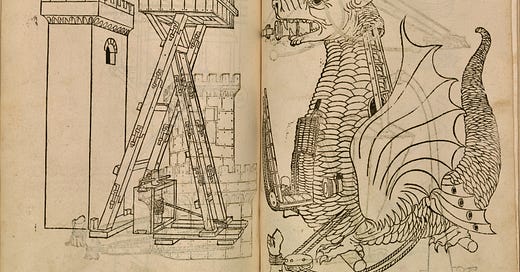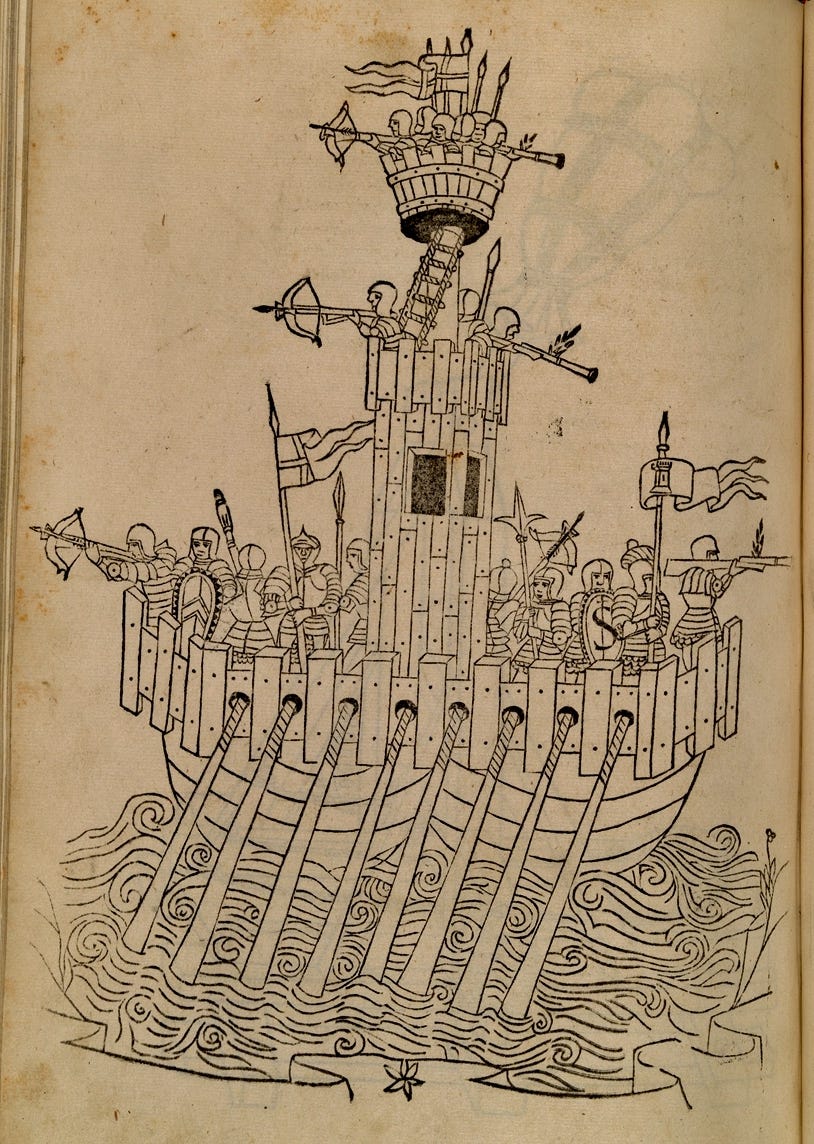De Re Militari [On the Military Arts] (1472)
"Fantastical floating fortress in the shape of a dragon"
The text touched on a wide range of matters ranging from the composition of Roman imperial legions to the qualities of effective commanders to the maintenance of discipline and morale. It was almost certainly not the author’s flowery and formulaic Latin, however, which made this edition a best-seller. Rather, readers (or more accurately viewers) found themselves fascinated by woodcuts which brought siege machinery, fortifications, artillery, and all range of weapons to life on the page. Some of these images presented familiar and even practical devices like rams and crossbows. Others, however, including a fantastical floating fortress in the shape of a dragon – complete with a fire-spewing canon in the beast’s gaping maw – demonstrated the potential of print to spur the imagination of engineers, artists, and a reading public eager for such novel visualizations. ~ Roberto Valturio's De Re Militari by Sean Roberts
When this military treatise was completed around 1460, the patron, Sigismondo Pandolfo Malatesta, distributed a number of manuscript copies to rulers such as Louis XI, Francesco Sforza, and Lorenzo de' Medici. Twenty-two handwritten copies survive. In 1472, the book appeared in print in this Latin edition, which was followed in 1483 by an Italian version. The novelty of the publication lay less in the machines portrayed than in the fact that the images of the machines achieved such wide distribution. Leonardo da Vinci knew the Italian edition well and drew inspiration from it for some of his drawings of military technology.
Title: De Re Militari (On the Military Arts)
Author: Roberto Valturio (Italian, Rimini 1405–1475 Rimini)
Publisher: Johannes ex Verona (Italian, active Verona ca. 1472)
Medium: Printed book with 82 woodcut illustrations impressed by hand; illuminated initials and descriptive captions also added by hand
Dimensions: 13 x 9 7/16 x 1 7/8 in. (33 x 24 x 4.8 cm)
Met Museum: 26.71.4





